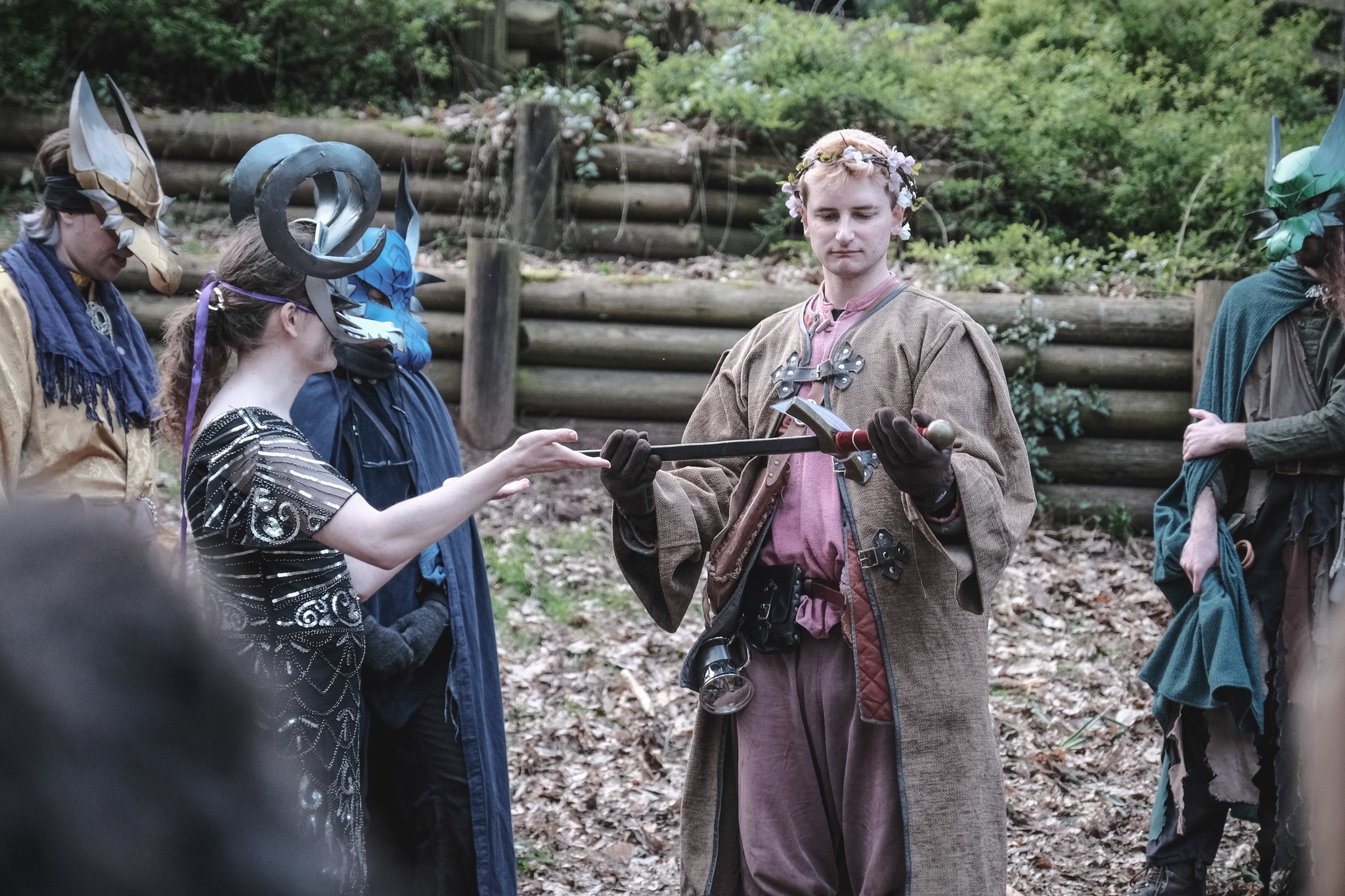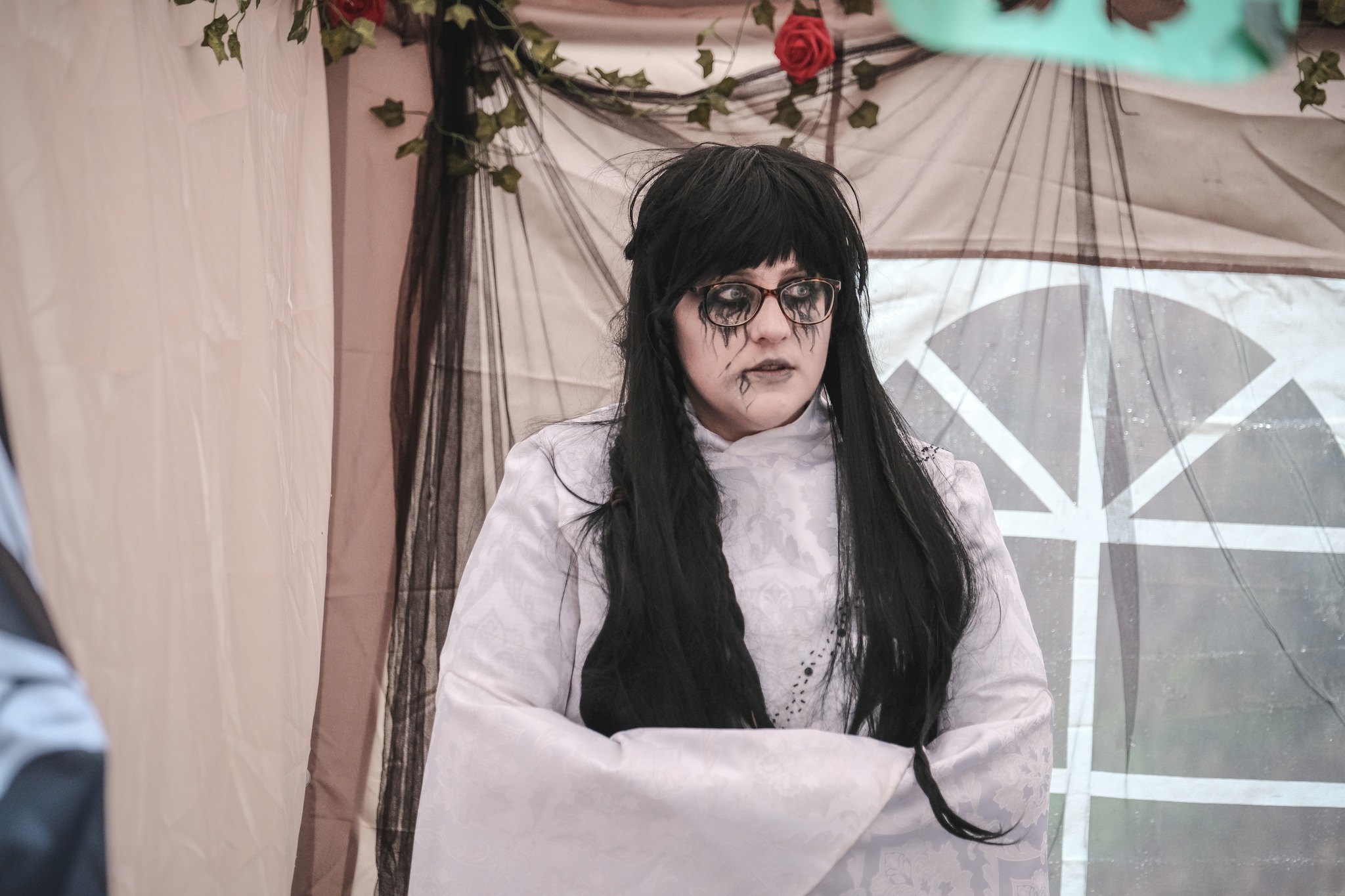Table of Contents
Powerful Places and Artefacts
Since Camelot opened its doors again, many things have come to light in the world - many artefacts and relics, as well as known places of power have become well known amongst the people. This page details commonly known information as of Chapter 7 at Camelot - you may choose how much or how little of this you know in character: this page is presented to provide opportunity to know about these things, rather than being a reading list to join the game!
Can't find what you're looking for here? You may find what you're looking for on one of the following pages:
Grails
A number of Grails - cups enabling their holders to wield impressive power - have become known since Camelot's gates opened. Though none of these match the description and legendary power of the True Grail, each is a formidable artefact in its own right. Several of these are owned by different individuals across the Hundred Realms, and the exact number and nature of these Grails is not widely known.
The Grail of Luck
The Grail of Luck - recognisable by the motif of bones the adorns it - was retrieved from the Pirate Hero Setana during the first opening of Camelot, and is purported to hold some degree of power over chance as well as extending the life of the holder. At the third opening of Camelot, The Juggler had acquired the Grail of Luck and held a contest for it to be won, at which point it was offered to Faolan Valcrest of Cerrid.
The Grail of Darkness
The Grail of Darkness - a dark cup with powers to raise the dead - first made its way into Camelot during its second opening, having been retrieved from forces of evil and held in the hands of The Spires. At last reckoning, the ownership of the Grail of Darkness was part of a contract between the Viziers of Stratiotora and The Spires.
The Grail of Royalty
The Grail of Royalty - emblazoned with the visage of an armoured knight - was uncovered in Camelot beneath a tree planted by the Knights of Cedunon and Lamorak and after a puzzle set out in the dreams of the world's monarchs was bequeathed to Cedunon by persuasion of Lamorak and Mithradites. During that same time at Camelot, the Knight-Captain Kynthelig of Cedunon publicly bestowed the Grail of Royalty to Arthur.
The Beast Grail
Not much is publicly known about the Beast Grail save that it was wrested from the hands of The Big Bad Wolf by crows toward the end of Camelot's third opening, and that it is recognisable by the face of a wolf on its side.
The Forest Grail
The Forest Grail - carved with the face of a person as if into bark of a tree - has similarly only recently been retrieved from its holder. Its exact ownership and abilities are not widely known but it is believed to be valuable to the world's druids.
The Grail of Light
Not much is known about the Grail of Light, but it is assumed to exist.
Excalibur
Legends tell of Arthur's great sword, Excalibur: magically powerful, and peerless throughout Albion. Retrieved from the Lake of Diana on a quest by Merlin and Arthur, the sword was rarely glimpsed in battle, but whole armies were rumoured to have been routed by the sight of it in Arthur's hand. The sword was lost during the Battle of Camlann until its hilt was found on a Quest during Camelot's first opening revealing that the sword had not only been broken into two parts but transformed into wood.
Since the locating of the hilt, attempts have been made to recover the blade. During the second opening of Camelot, it was discovered that The Goblin Queen had acquired the blade. Giving it up for the promise of land on the surface that later became Goblin Lands, the blade was taken by The Lady of the Lake and was only retrieved during the third opening of Camelot.
The sword is now whole and has been given the name “Hope” by its wielder, Eirik the Lost.
The Library of Gwyvale
Formerly known as “the Lost Library of Gwyvale” until it was rediscovered underneath Camelot during its second opening, the Library of Gwyvale represents the collective knowledge of Camelot and has been horribly cursed with guardians that ask riddles and threaten those who enter. Merlin herself is unable to step into the depths of the Library that was once her own, but for those who brave its depths there are many secrets to be found.
Camlann Fields
The battlefield where Arthur and Albion originally fought the Saxon Army after Mordred's betrayal. Here, Arthur was terribly wounded and the original Fall of Camelot truly began.
The Lake of Diana
Former home to The Lady of the Lake and site of the famed bequeathing of Excalibur to Arthur, the Lady of the Lake lies deep within former Saxon (now Serian) territory and remains a place of power for the waters of the land.
The Oracular Mirror
See also the Oracular Mirror original description on the Camelot page.
The Oracular Mirror - that blessed and cursed item that allows those who interact with it to present choices that will be made and foresee their outcomes - is one of (if not the) most carefully treasured items within Camelot. Available only to the eyes of Servants of the Lost.
Often mistaken for the great map table that lies within the Conquest tent erected in Camelot, the table itself has no magical powers, simply being a representation of what the Mirror shows. Exactly where the Mirror is, and how it is protected, is something held as a close secret, pursuit of which is something none have yet attempted for fear of upsetting the careful balance of the Realms and the Mirror's magic itself.
As of the third opening of Camelot, the Oracular Mirror has also allowed insight into the Quests and Vignettes being led from Camelot, with its magic imbued into the powerful gateways that allow for hour-long expeditions into the Hundred Realms.
Camelot
See also Camelot.
Beyond the legends, Camelot is known to be a focal point among the Realms for powerful entities to converge upon, particularly when visitors from across the Realms are allowed in. Fallen to ruin, the city of Camelot itself is a slither of a shadow of its former glory, but the magical significance of the place remains strong.
Demonstrated several times since the re-opening of Camelot, the city remains defended from magical attacks and is known to be significantly strong against invaders: all attempts - save one - to cast spells onto Camelot have been redirected onto other territories, and the Conquest table portrays Camelot as having seven times the strength of a standard Stronghold.
Camelot also holds relation to nearby islands in the waters that surround it: Oak Island, Linmyre, Saddlecross, and Parting Ways. The exact significance of these is yet to be determined, other than that they were until the third opening of Camelot concealed by The Shroud.
The Shroud
See also The Shroud's original description on the Camelot page.
The Shroud of Camelot - a great and powerful working of magic - was destroyed at the end of the second opening of Camelot, freeing the residents of Camelot from a curse preventing them from leaving and opening up their memories. The destruction came at great cost to the mage who destroyed it - taking the powerful artefact used to cut the fabric with them - but has rendered the Shroud's magic destroyed.
While the Shroud is gone, the lasting effects of the Shroud on the people and lands of Camelot are still being discovered.
The Fonts of Magic
The Fonts of Magic are a powerfully magical location that manifest within Camelot in which mages are capable of expending Magic Beans and other resources to craft their spells. This is the only location in the world where Beans can be crafted into spells with such ease, though determined practitioners can create their spells elsewhere with enough effort.


